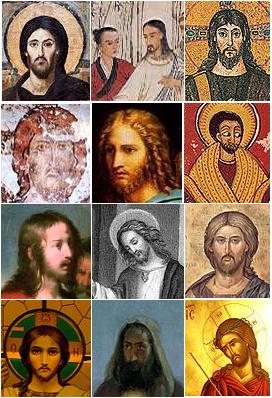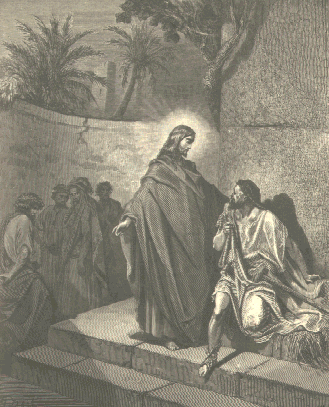Oct 25, 2018 Helen Flatley

When Daniel Christos decided to head to Kenya, continuing his itinerant traveling lifestyle, he didn’t expect to cause a religious sensation.
However, the 29-year-old Australian backpacker has been mistaken for Jesus so many times he has now has a huge online following and was even forced to explain his story on Kenyan television.
Christos (who, ironically, shares a surname with the Messiah) bears a striking resemblance to the conventional depiction of Jesus in popular culture and religious iconography.

Jesus in art
He has a long brown beard, long hair and brown eyes, dresses in flowing robes, and walks barefoot, with a wooden stick.
According to the Daily Mail, his simple, distinctive clothing, and open, peaceful character have led many people in Kenya and other parts of Africa to associate him with Jesus.

Christ Exorcising a Mute by Gustav Dore, 1865.
Describing his experience as “intense,” Christos explained that he is mistaken for Jesus on a daily basis, and is constantly photographed and questioned by Christian believers who are convinced he represents the second coming of Christ.
According to Christian doctrine, Jesus was born as the Son of God, was crucified, and three days later rose again from the dead. Around 40 days later, he ascended to heaven, leaving behind a series of teachings and a group of followers that would go on to establish the early Church.
However, there is a core belief in Christian doctrine that Christ will come to earth once again. According to some beliefs, this second coming will herald the start of the apocalypse, the end of the world and the last judgment day.
As a result, many Christians today are patiently waiting for Jesus to come once again, to complete the final process of our salvation.
Christos shares a close resemblance with many popular depictions of Jesus, and as a result, many of the people he meets on his travels believe that he may be the second incarnation of Christ.
He has become an internet sensation and now has a significant online following.
Those he meets on the streets of Nairobi and elsewhere in Kenya often stop to take pictures of him, and them post them to social media sites.
According to the Mirror, this has even spawned a hashtag – #JesusinNairobi – which allows his supporters to track his whereabouts and follow his progress. People have invited him into their homes, and even taken pictures of themselves washing his feet, just as Jesus’ own followers did in many of the stories of the New Testament.
Although this could be laughed off as an amusing travel anecdote, Christos is having increasing difficulty persuading his followers that he is, in fact, not the Messiah. He has been forced to conduct public interviews in Kenya in order to convince people that he is actually just a software engineer from Australia.
He explained to TV audiences that he had decided to grow his hair and beard and to travel in Africa as an antidote to his high-pressured and stressful job.
He had resolved to embrace a simpler lifestyle, abandoning his career and material possessions. Even then, however, many of his followers didn’t believe him, arguing that this type of humble behavior would be typical of the “real” Jesus.
According to anthropologists, belief in the second coming of Jesus is often linked to periods of crisis, with Messianic and apocalyptic beliefs emerging in response to natural disasters, wars and other catastrophes.
It’s perhaps no surprise that today, as natural and man-made disasters have profound implications for societies across the world, people are more predisposed to the idea of Jesus appearing on the streets of Nairobi.
Unfortunately for Christos, these beliefs can stir up strong religious feelings, and even cause conflict between communities. Although he has mainly received warm hospitality and friendship, some commentators have been more hostile, with one follower even suggesting that he should be crucified.
Christos is adamant that he is simply an open, honest and “natural” person, living his life in the best way he knows how. However, unless he’s prepared to shave his beard and don a pair of shoes, he’s likely to continue attracting attention wherever he goes.
